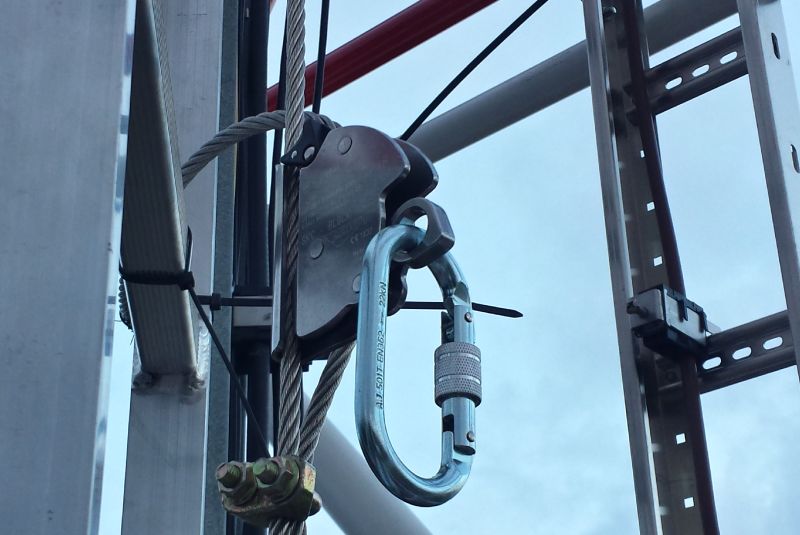Working on towers and masts can be dangerous. This can be seen from the manufacturers' recommendations, which suggest that no work should be carried out on structures when winds exceed 5 m/s. Fortunately, we have occupational health and safety or mountaineering harnesses at our disposal, which significantly increase safety, although rarely comfort. Changing position on the mast is particularly uncomfortable when each step means having to re-attach the reins... or giving up the protection until the next working position is reached (which is often the practice of experienced service technicians and installers).
A good solution to the problem is the increasingly popular anti-fall systems. Basically, the essence of their operation is the use of a wheelchair attached to the harness and some form of guide on which the wheelchair moves. The trolley moves up and down without resistance, but in the event of a jerk (due to the service technician falling from the structure), the appropriate mechanism clamps in the guide, preventing further free flight.
Guides in systems most often take the form of a rope: as in the company's SKC-Stop solution Assecuro, or alternatively steel rails, e.g. system Tractel, Soll (Glideloc), Faba.
Most anti-fall systems are used in conjunction with ladders, they complement them, but it is not necessary. AluPro has its own Securo solution, compatible with SKC-Stop trolleys, which can be mounted even on small masts without ladders.
The Securo system consists of an 8 mm certified stainless steel rope, tensioned with a turnbuckle, an upper handle mounted on the flanges of the last mast segment, and a lower handle, depending on the version, mounted on the last 2 steps of the ladder or on the curb of the mast (when there is no ladder). The system also includes polyurethane rope guides.

